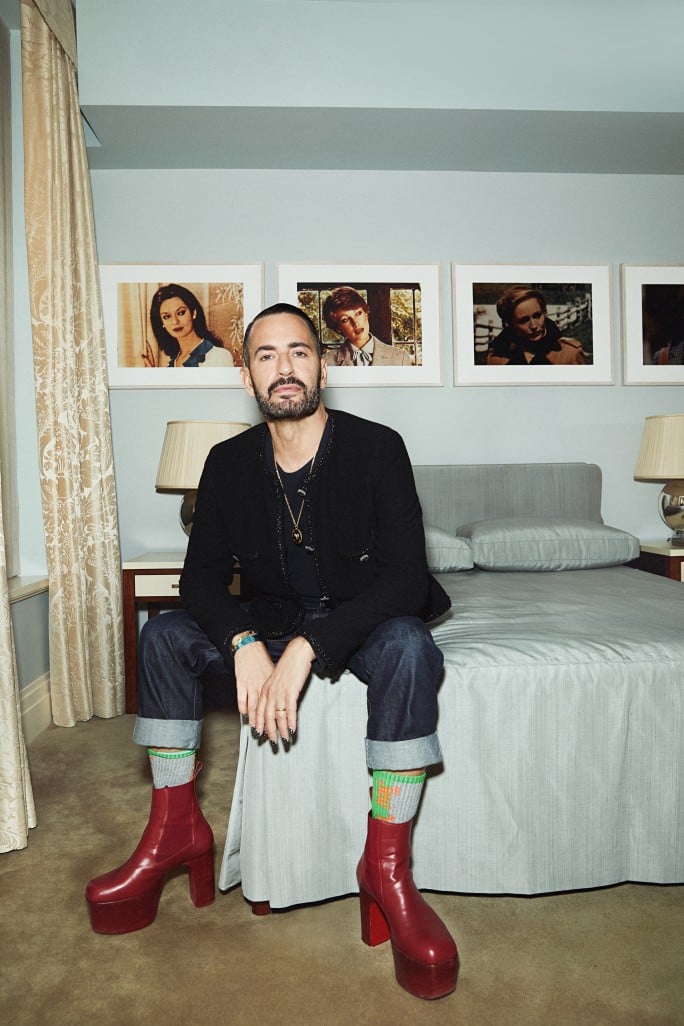Pipe Opening
2002 - Photography (Photography)
Jeff Wall
As suggested by its title, Pipe Opening (2002) depicts a hole in a wood wall exposed by the removal of a pipe. In contrast to his signature immense tableaux, Pipe Opening is a direct but modest document of a “real” scene that Wall “encountered by chance” in daily life. However factual, the image indicates certain enigmatic significance, allowing multiple interpretations. Wall encourages the viewer to engage with the scenario to imagine the before and the after of the moment. Compared to his earlier work, Wall’s photographs appear to be straight-up snapshots, exhibiting less manipulative details. The fictional details are not conveyed through obvious arrangements but due to the very nature of photographs: What they record is always an incomplete view of the world.
Internationally renowned photoconceptualist Jeff Wall is famous for his large-format lightboxes whose subject matter ranges from figurative portraiture to urban environment to mundane objects to elaborately constructed scenes. Hovering between documentary realism and fictional storytelling, and between photographs and films, Wall’s works are experienced rather than looked at.
Colors:
Related works featuring themes of: » Photo-Conceptualism, » Conceptual Photography, » Vancouver School, » Bedrooms and Bathrooms, » Black-and-White Photography, » Canadian, » Cinematic

© » KADIST
Stan Douglas
1997Michigan Central Station is part of a larger photographic series, Detroit Photos , which includes images of houses, theaters, stadiums, offices, and other municipal structures...

© » KADIST
Jennifer Bornstein
1994Collectors’ Favorites is an episode of local cable program from the mid-1990s in which ordinary people were invited to present their personal collections—a concept that in many ways anticipates current reality TV shows and internet videos...

© » KADIST
Eleanor Antin
1973Comprised of fifty-one photographic postcards, Antin’s 100 Boots is an epic visual narrative in which 100 black rubber boots stand in for a fictional “hero” making a “trip” from California to New York City...

© » LARRY'S LIST
Ed Ruscha
The fashion designer is selling off all the art inside his West Village townhouse at Sotheby’s New York to make way for a new collection....

© » KADIST
Chen Chieh-Jen
2010Empire’s Borders II – Passage and Empire’s Borders II – Workers are from the three-channel film installation Empire’s Borders II – Western Enterprise, Inc...

© » KADIST
Allen Ruppersberg
1970Untitled (City Limits) is a series of five black-and-white photographs of road signs, specifically the signs demarcating city limits of several small towns in California...

© » KADIST
James Welling
2006Welling employs simple materials like crumpled aluminum foil, wrinkled fabric and pastry dough and directly exposes them as photograms, playing with the image in the process of revealing it...

© » KADIST
Claudia Joskowicz
2008The primary interest in the trilogy is Joskowicz’s use of cinematic space, with long tracking shots that portray resistance to habitual viewing experiences of film and television...

© » KADIST
An-My LE
2010The print Patient Admission, US Naval Hospital Ship Mercy, Vietnam (2010) features an Asian Buddhist monk and an American Navy Solider on board the Mercy ship –one of the two dedicated hospital ships of the United States Navy– sitting upright in their chairs and adopting the same posture...

© » KADIST
Matt Lipps
2011Untitled (Women) (2011) presents a startlingly succinct history of violently romanticized femininity...

© » KADIST
Rodney Graham
1991Ponderosa Pine IV belongs to a series of large-scale photographs of trees taken by Graham and depicts a particular species that live in Northern California...

© » KADIST
Gregory Crewdson
2005Forest Gathering N.2 is part of the series of photographs Beneath the Roses (2003-2005) where anonymous townscapes, forest clearings and broad, desolate streets are revealed as sites of mystery and wonder; similarly, ostensibly banal interiors become the staging grounds for strange human scenarios...

© » KADIST
John Baldessari
1997In One Must , an image of a pair of scissors, accompanied by the words of work’s title, poses an ominous question about the relationship between the image and the text...

© » KADIST
Wong Hoy Cheong
2009Days of Our Lives: Reading is from a series of work was created for the 10th Biennale de Lyon by the artist...

© » KADIST
Wong Hoy Cheong
2004Re: Looking marks a new phase in Wong’s work which connects his region’s history with other parts of the world...

© » KADIST
Matt Lipps
2011In the series Horizons (2010), Lipps uses appropriation to riff on Modernism’s fascination with abstract form...




